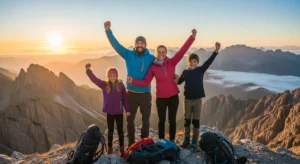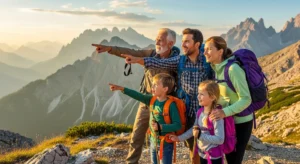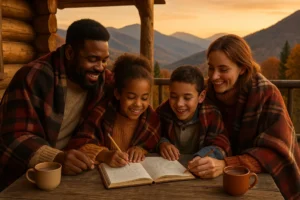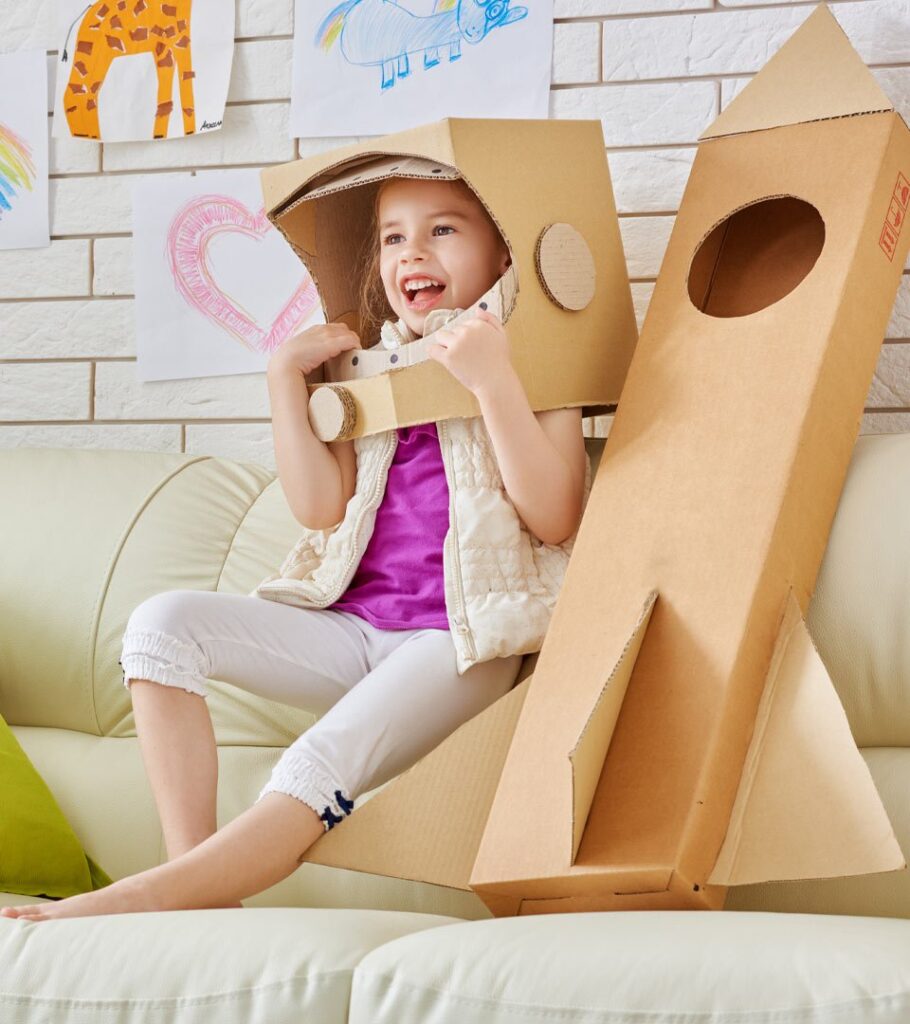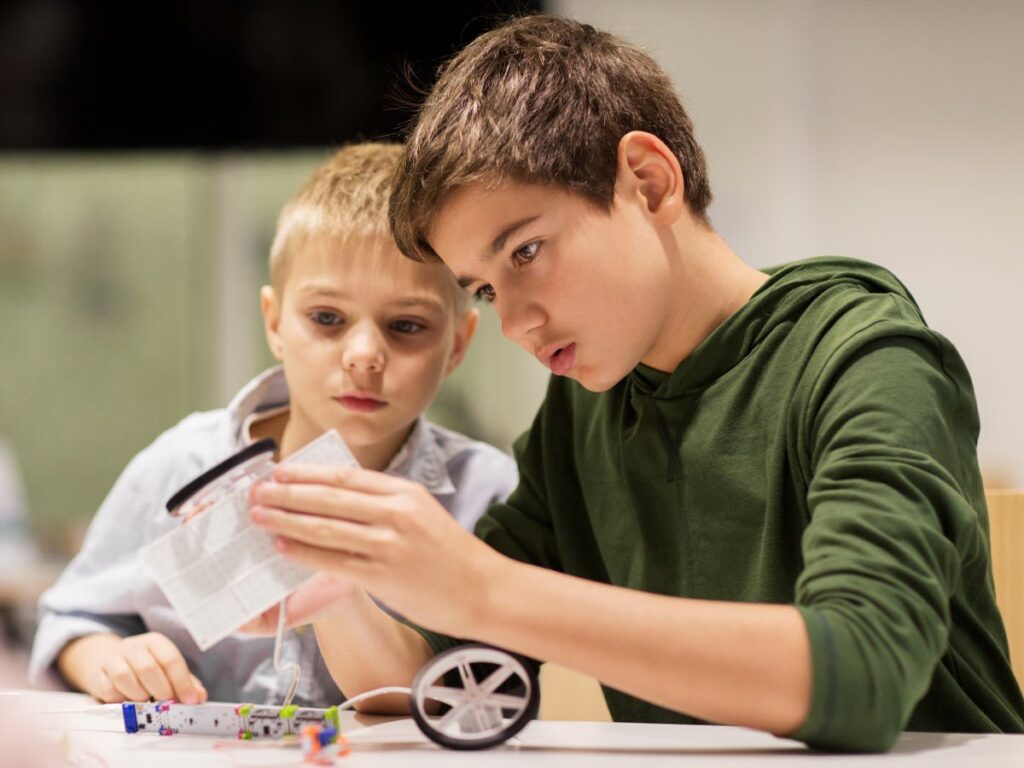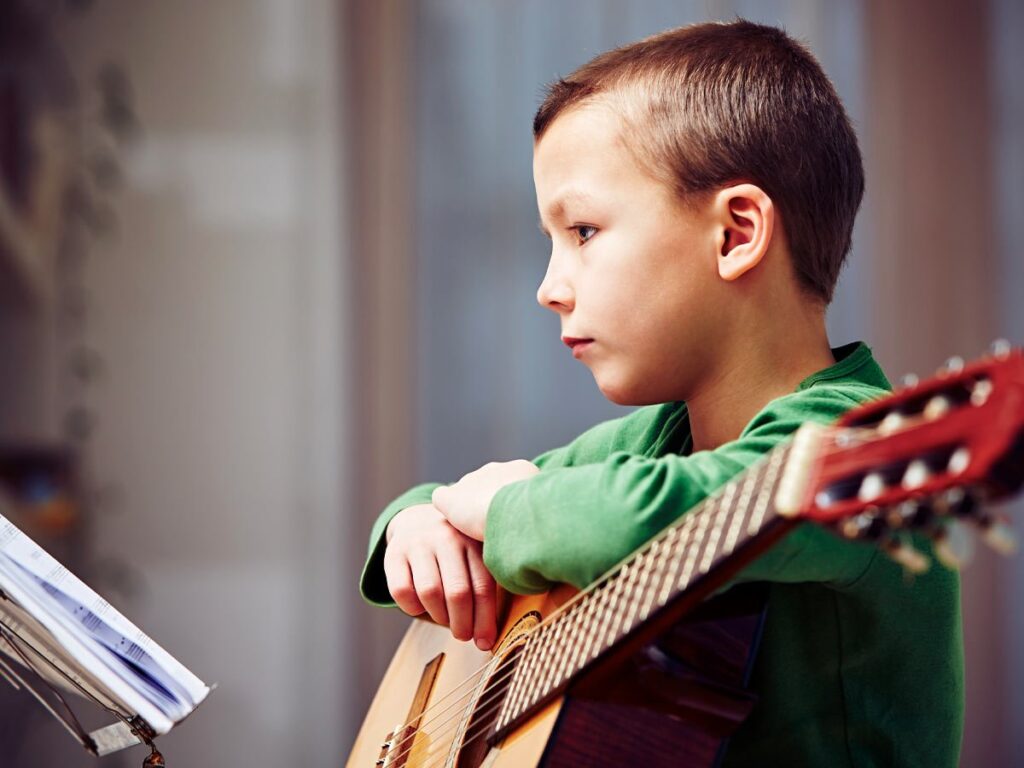For those of us raising families in the High Country, the mountains are more than just a scenic backdrop — they’re an extension of our backyards and a natural playground waiting to be explored. This unique access to nature provides a powerful opportunity to embrace one of the most exciting trends in education: forest schooling. This child-led, nature-based approach to learning is gaining momentum across the country, and it’s perfectly suited to our mountain lifestyle.
Research published in the journal Educational Psychology Review found that forest school programs significantly improve children’s confidence, social skills, and overall well-being compared to traditional indoor education. While the idea of a formal “school” in the woods might seem daunting, creating a forest school experience at home is simpler than you think. It’s about shifting your mindset and using the natural world as your classroom.
What is Forest School?
Forest school is an educational philosophy that originated in Scandinavia in the 1950s and has since spread worldwide. At its core, forest school is about allowing children to learn through hands-on experiences in a woodland or natural setting. Unlike traditional classrooms with rigid curricula and structured lessons, forest school is flexible and guided by the children’s own interests, discoveries, and natural curiosity.
The approach emphasizes developing the whole child — socially, emotionally, physically, and intellectually — through play, exploration, and what educators call “supported risk-taking.” This means allowing children to encounter manageable challenges in nature, from climbing trees to using real tools, all under appropriate adult supervision.
According to Children & Nature Network, a leading organization promoting nature-based education, this type of learning environment helps children develop critical thinking skills, creativity, and a deep connection to the natural world that stays with them throughout their lives.
The Benefits of a Forest School Approach
Integrating forest school principles into your child’s life can have profound and lasting impacts on their development. Research from institutions like Columbia University’s Teachers College has documented numerous benefits of outdoor, experiential learning for young learners.
Builds Resilience and Confidence
Navigating uneven terrain, climbing trees, balancing on logs, and building shelters all involve a degree of manageable risk. When we allow children to take these supported risks in nature, we help them build genuine confidence that comes from overcoming real challenges. They learn that they are capable, that they can solve problems, and that temporary failure is simply part of the learning process.
A systematic review published in the National Institutes of Health database found that forest school programs significantly improved children’s motor coordination, balance, and physical confidence. These physical skills translate directly into emotional resilience and self-assurance.
Sparks Curiosity and Creativity
Nature is the ultimate open-ended learning environment. A simple stick can become a magic wand, a fishing rod, a tool for digging, or a component in an elaborate fort. This kind of imaginative, unstructured play is crucial for cognitive development and creative thinking. When children aren’t handed pre-made toys with predetermined purposes, their imaginations flourish.
Research shows that children who regularly engage in nature-based play demonstrate enhanced problem-solving abilities, improved focus and attention, and greater creativity in their approach to challenges both in and out of the classroom.
Fosters a Deep Connection to Nature
When children spend regular, meaningful time in nature, they develop what researchers call “nature connectedness” — a sense of wonder, appreciation, and responsibility toward the natural world. This connection is the foundation for environmental stewardship. Children who love nature grow into adults who protect it.
In our High Country home, we have a particular responsibility and opportunity to raise the next generation of environmental stewards. By helping our children fall in love with these mountains, forests, and rivers, we’re investing in the future protection of these precious places.
Improves Physical and Mental Health
The physical benefits of outdoor activity are well-documented: improved cardiovascular health, stronger muscles and bones, better coordination, and reduced risk of childhood obesity. But the mental health benefits are equally significant. Time in nature has been shown to reduce stress hormones, improve mood, enhance focus, and even alleviate symptoms of anxiety and depression in children.
This is particularly important in rural communities where access to mental health services may be limited. As we discussed in our post on Mental Health Awareness for Kids & Teens in Rural Communities, nature can be a powerful therapeutic tool.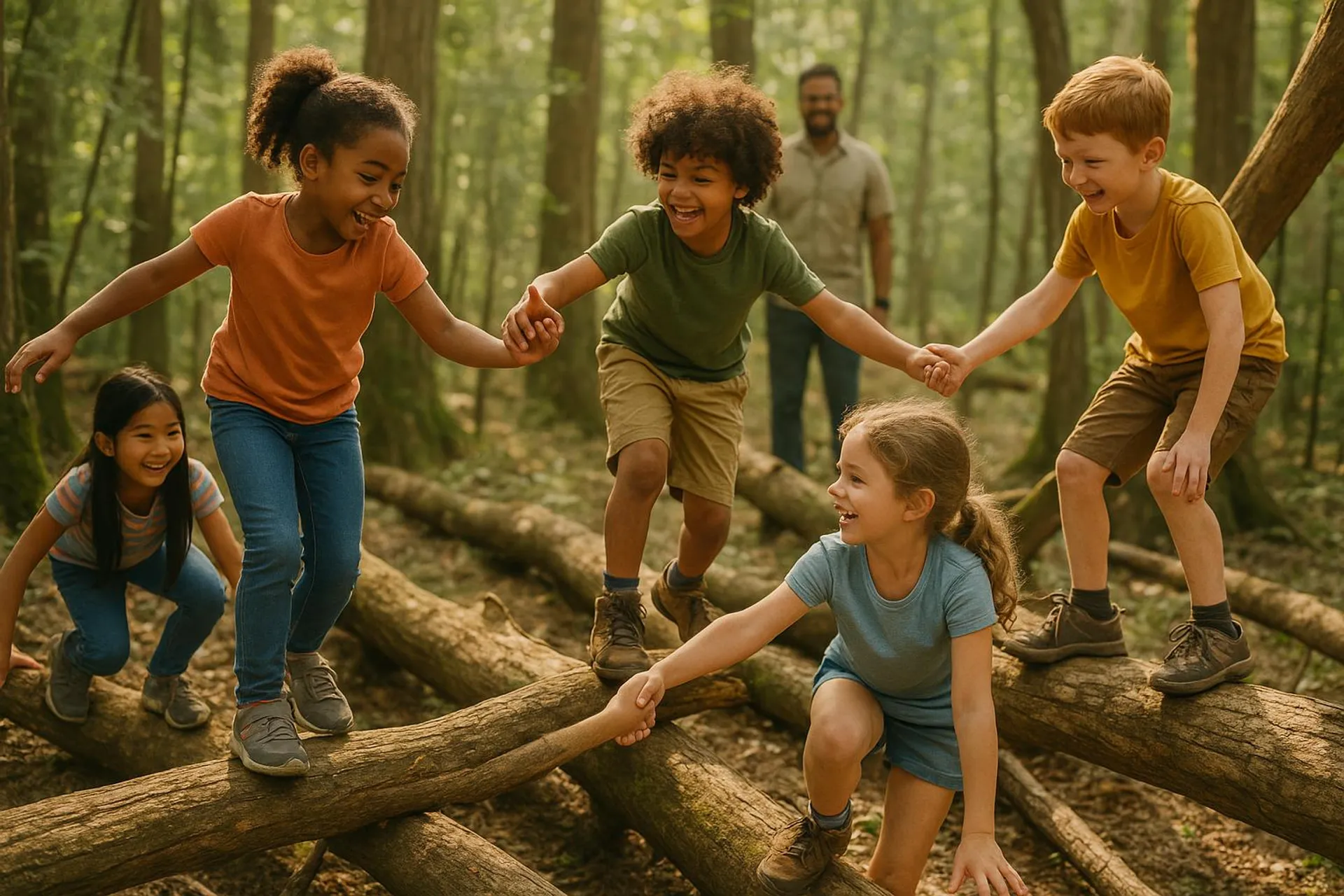
Creating Your Own Forest School at Home
You don’t need a formal curriculum, teaching credentials, or even a dedicated woodland to start your own forest school. The beauty of this approach is its flexibility and accessibility. Here’s how to get started right in your High Country backyard:
| Core Principle | What It Means | How to Implement at Home |
|---|---|---|
| Frequent and Regular Visits | Consistency is key to forest school. Children benefit most from regular, repeated exposure to the same natural space over time. | Aim for regular, dedicated time outdoors, whether it’s a daily 30-minute nature walk, a weekly “forest school Friday,” or weekend wilderness adventures. Mark it on your calendar like any other important appointment. Even short, frequent sessions are more beneficial than occasional long outings. |
| Child-Led Learning | Let your child’s natural curiosity be your guide rather than following a predetermined lesson plan. | If your child is fascinated by a particular bug, take the time to observe it together. Look it up later if they want to learn more. If they want to build a fort, help them gather materials and problem-solve construction challenges. Follow their interests rather than imposing your agenda. |
| Embrace All Weather | There’s a Scandinavian saying: “There’s no such thing as bad weather, only bad clothing.” Forest school happens year-round. | With the right gear, you can explore the outdoors in all seasons. Rain, snow, wind, and sun each offer unique learning opportunities. For tips on preparing your family for winter adventures, check out our guide to Preparing for Winter in the High Country. |
| Supported Risk-Taking | Allow children to take small, manageable risks under your watchful supervision. | This could be anything from climbing a tree to using a real tool like a small saw or whittling knife (with proper instruction and supervision). Stay close and offer guidance, but resist the urge to intervene unless absolutely necessary. Let them experience the satisfaction of overcoming challenges independently. |
| Minimal Equipment | Nature provides most of what you need. The focus is on natural, open-ended materials. | You don’t need fancy outdoor toys. Sticks, rocks, pinecones, leaves, mud, and water are the building blocks of forest school play. Consider bringing a small backpack with basics: water, snacks, a first aid kit, and perhaps a magnifying glass or field guide. |
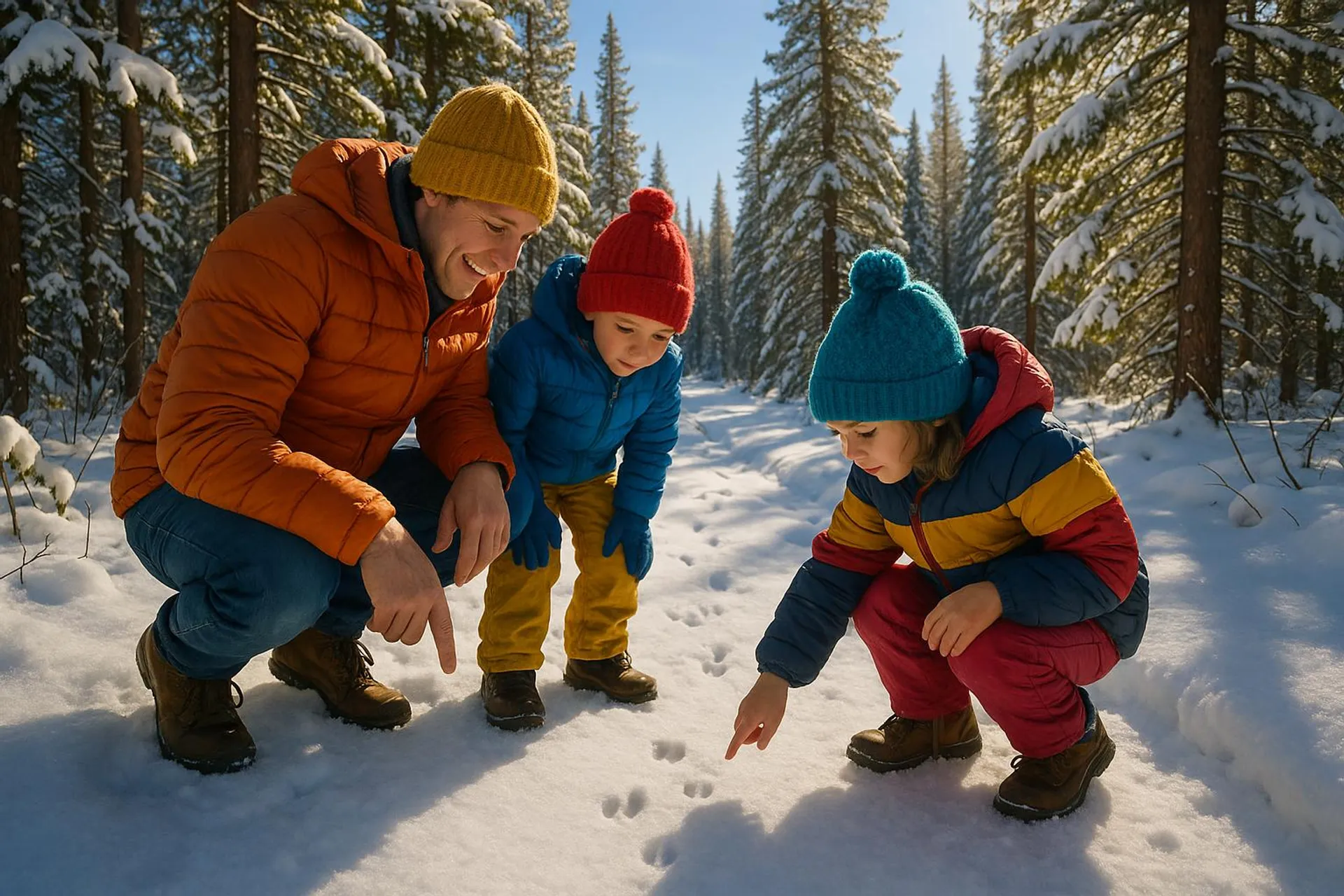
Practical Activities to Get Started
If you’re wondering what “forest school” actually looks like in practice, here are some simple activities that embody the philosophy:
Nature Observation and Documentation
Encourage your children to become naturalists. Bring a simple notebook and pencil on your outdoor adventures and invite them to sketch what they see: interesting leaves, animal tracks, cloud formations, or insects. This combines art, science, and mindfulness in one activity. Over time, these nature journals become treasured records of their observations and growth.
Building and Construction
Challenge your children to build something using only natural materials they find: a fort, a bridge over a small stream, a nest for a pretend bird, or a fairy house. This type of open-ended construction develops spatial reasoning, problem-solving, collaboration (if working with siblings or friends), and fine motor skills.
Sensory Exploration
Nature engages all five senses in ways that indoor environments simply cannot. Encourage your children to really experience their surroundings: feel the texture of tree bark, listen to bird calls, smell wildflowers or pine needles, look closely at the patterns on a leaf, and (when appropriate and safe) taste edible plants like wild berries or mint.
Tool Use and Practical Skills
Under appropriate supervision, teach your children to use real tools. This might include a small hand saw for cutting branches, a pocket knife for whittling, or tools for building a fire (for older children). These practical skills build confidence, teach safety and responsibility, and connect children to traditional outdoor knowledge.
Storytelling and Imagination
Nature is the perfect setting for imaginative play. That fallen log becomes a pirate ship. The grove of trees transforms into an enchanted forest. The creek is a mighty river to cross. Encourage this type of imaginative play by asking open-ended questions: “I wonder what lives under that rock?” or “Where do you think this trail leads?”
Connecting Forest School to Academic Learning
For families who are homeschooling or supplementing traditional education, forest school naturally integrates with academic subjects:
- Science: Observe ecosystems, identify plants and animals, study weather patterns, explore physics through building and balancing structures.
- Math: Measure trees, count and sort natural objects, explore patterns and symmetry in nature, calculate distances on trails.
- Language Arts: Write nature poetry, keep observation journals, tell stories inspired by the natural world, learn nature-related vocabulary.
- Art: Create land art, sketch observations, build sculptures from natural materials, study the colors and patterns in nature.
- Social Studies: Learn about indigenous peoples’ relationships with the land, study local ecology and conservation, understand human impact on the environment.
For families already exploring alternative education approaches, forest school is a natural complement. You can read more about flexible learning options in our post on Flexible Learning & Homeschooling / Micro-Schools in Rural Settings.
Safety Considerations
While forest school emphasizes supported risk-taking, safety is always paramount. Here are important considerations:
- Know your environment: Be aware of potential hazards in your area, including poisonous plants, dangerous wildlife, steep drop-offs, or unstable terrain.
- Teach outdoor safety skills: Help children learn to identify poison ivy, stay on trails when appropriate, respect wildlife from a distance, and understand their own limits.
- Supervise appropriately: The level of supervision should match your child’s age, abilities, and the specific risks of the environment.
- Be prepared: Always carry a first aid kit, extra water, weather-appropriate clothing layers, and a means of communication in case of emergency.
- Start small: Begin with your backyard or a familiar local trail before venturing into more remote areas.
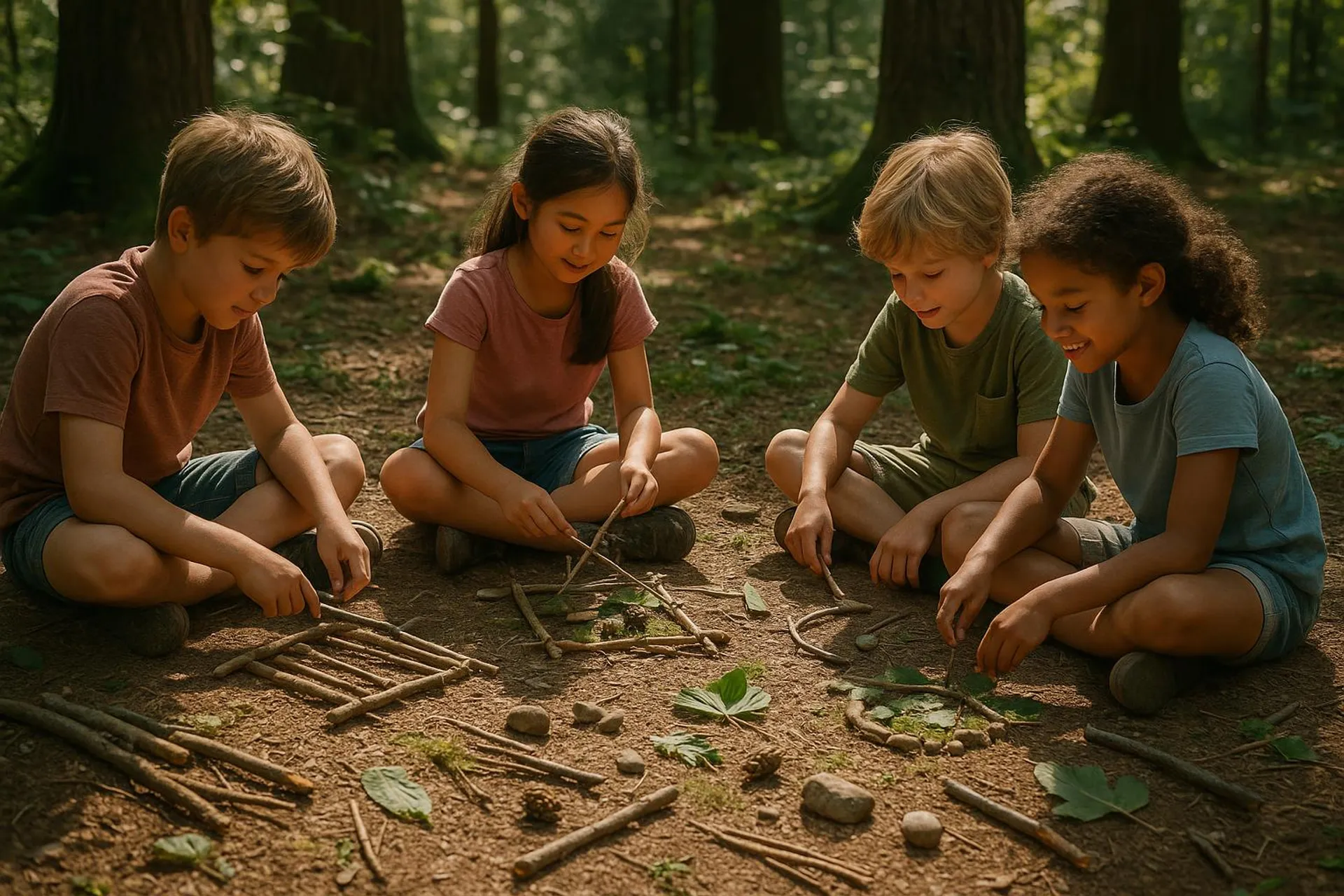
Building Community Around Forest School
Forest school doesn’t have to be a solitary family activity. Consider connecting with other like-minded families in your area to create a forest school co-op or regular outdoor playgroup. The social benefits of learning alongside peers are significant, and it can be easier to maintain consistency when you have a committed group.
Check with your local library, community center, or homeschool networks to see if forest school groups already exist in your area. If not, consider starting one yourself. Even gathering with just one or two other families can create a rich, supportive learning community.
Overcoming Common Obstacles
Many parents express concerns about implementing forest school at home. Here are solutions to common obstacles:
“I’m not an outdoor expert.” You don’t need to be. Forest school is about learning together with your children. Use field guides, apps, or online resources to identify plants and animals alongside your kids. Your curiosity and willingness to explore are more important than expert knowledge.
“We don’t have access to a forest.” While “forest school” is the common term, the principles apply to any natural environment: a park, a field, a creek, even your backyard. The key is regular time in nature, whatever nature is accessible to you.
“My child resists going outside.” Start small and make it appealing. Bring a special snack to enjoy outdoors. Invite a friend. Follow your child’s specific interests (bugs, rocks, water play). Build positive associations with outdoor time, and resistance typically fades.
“I worry about safety.” Supported risk is not the same as reckless danger. Start with very manageable challenges in controlled environments and gradually expand as your child’s skills and confidence grow. Your presence and guidance make risk-taking safe and educational.
Final Thoughts: The Gift of Nature-Based Learning
Creating a forest school experience at home doesn’t require a complete overhaul of your family’s routine or educational approach. It’s about making a commitment to regular, meaningful time in nature and allowing your children’s natural curiosity to guide their learning.
In the High Country, we have an extraordinary gift: immediate access to some of the most beautiful natural environments in the world. By embracing forest school principles, we’re not just educating our children — we’re helping them develop a lifelong relationship with the natural world, building their confidence and resilience, and creating memories that will last forever.
So step outside, follow your child’s lead, and let the forest be your teacher. The lessons learned under the open sky are the ones that truly stick.
The mountains are calling, and your classroom is waiting.



